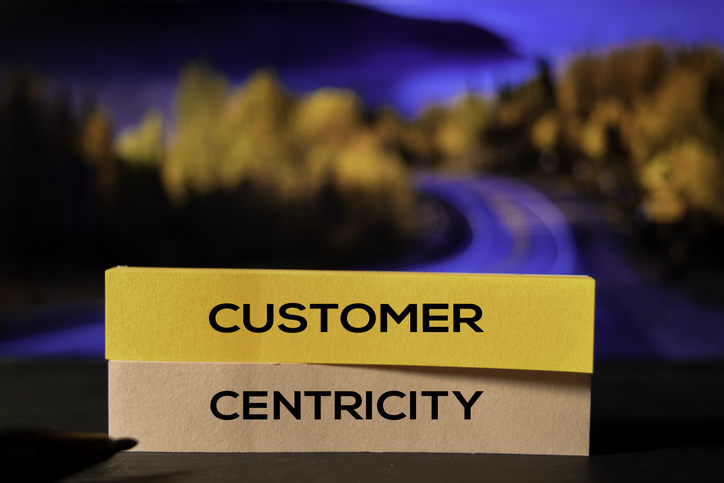Editor’s note: Karl Sharicz is founder and CEO of Quincy, Mass.-based CX consulting firm HorizonCX. Joe Camirand is firm’s VP of client services. This is an edited version of a post that originally appeared under the title, “The power of empowerment.”
 It is becoming increasingly popular for organizations to claim customer-centricity. That essentially means they are declaring to have transformed a business from one that focused primarily on products and services to one that values customers and customer experience above all else.
It is becoming increasingly popular for organizations to claim customer-centricity. That essentially means they are declaring to have transformed a business from one that focused primarily on products and services to one that values customers and customer experience above all else.
Without a lot of strategic thinking behind it, and not much in the way of changing behavior, some businesses are promoting their new-found processes and business evolution.
They often begin with aggressive marketing and advertising campaigns, communicating how much they care about customers and how much they are focused on improving the customer experience.
However, many transitions like this, or “transformations,” remain at the management or executive level. Some organizations may just “talk the talk” to win future business.
Unfortunately, we find the people that typically have the biggest impact on the customer experience, the frontline employees, are usually not even aware of what their role is in helping the organization’s vision of customer-centricity.
And, even when they are aware, they are not truly empowered to deliver upon it.
Empowering frontline employees to act immediately
Many research studies show that when employees feel empowered, they are better at delivering to customer expectations and, in the process, are more engaged, more satisfied and become more productive employees.
If people with the right skills and a positive attitude are hired and properly onboarded and trained in whatever knowledge and skills they may be lacking, that at least establishes a foundation for empowerment.
Think about how many times you’ve encountered poor or unacceptable customer experience. How empowered was the person you were dealing with to resolve your issue quickly and seamlessly and leave you feeling satisfied with the resolution?
In most cases, they likely needed to escalate the problem to a manager or worse, pass you on to someone else. This lack of empowerment often leads to poor customer experiences.
Effectiveness, ease and emotion
When thinking about empowerment, we’re reminded of Forrester Research’s three core dimensions of customer experience – effectiveness, ease and emotion.
When transactions take place or issues arise, you want your customers to achieve and derive value from what they are aiming for (effectiveness), make the process easy for them to obtain it (ease) and finally you want them feeling positive about the transaction or resolution (emotion).
Without a proper and well-articulated empowerment plan, this is difficult to accomplish. Every organization is different and the degree to which employees can be empowered to deliver on this will vary.
But, and perhaps most important, employee empowerment requires that leaders relinquish some power of their own in order to instill some autonomy, responsibility and accountability within those that report to them.
For authoritarian type leaders, accustomed to making all the decisions on behalf of their team, that can be quite distasteful and outright threatening.
Leadership is crucial to supporting empowerment
In a Harvard Business Review article from March 2018 titled, “When Empowering Employees Works, and When It Doesn’t,” the authors describe how empowering employees is dependent upon trust and mentorship by their leaders and is largely determined by how they perceive their leaders’ behaviors.
The study revealed that employees were more likely to trust leaders who they perceived as more empowering. They had a greater faith and trust in their leaders and were more likely to put in extra effort without feeling that they would be reprimanded for making bad or wrong decisions.
They also felt a greater sense of control within their work. They felt that their job had meaning, aligned with their values, that they were competent in their abilities and that they could make a difference.
That leads to more engaged employees which in turn helps to better deliver on customers’ expectations and, as a result, build more satisfied and loyal customers. However, are there circumstances where this doesn’t work?
The Harvard Business Review study also found that sometimes more harm than good can come from empowering employees, if they are without the appropriate support and mentoring that goes along with it.
If more responsibility and additional tasks are delegated, unaccompanied by trust and relationship-building, it can indeed backfire. Employees can feel that the leader is simply dumping extra work on them to circumvent or avoid their own responsibility.
Proper and effective empowerment is achieved when employees’ expectations are met and aligned with the expectations of those they report to and where there is a good relationship and understanding among leaders and their subordinates.
Real-world employee empowerment
 Empowerment is about proper delegation and about supporting employees. For example, as part of its commitment to providing a great customer experience and developing ambassadors for its brand, Chick-fil-A has put forth considerable efforts in employee training and empowerment.
Empowerment is about proper delegation and about supporting employees. For example, as part of its commitment to providing a great customer experience and developing ambassadors for its brand, Chick-fil-A has put forth considerable efforts in employee training and empowerment.
At a Massachusetts location, cashiers are empowered to resolve most typical customer issues on their own without needing to speak to a manager.
Without management approval, they’re able to provide restitution for up to twice the value a customer paid for their meal on the spot and provide a “dinner on us” card to ensure a future visit.
While this is just one example, and may not be necessarily relevant to your business, it’s the thinking behind it that’s most important. There’s an intended design at play here with employee expectations aligning with leaders’ expectations.
There’s power in empowerment
Think about the ways your organization could be more proactive and effective by empowering customer-facing employees, and what kind of impact that may have on your brand, customer experiences and future business outcomes.
